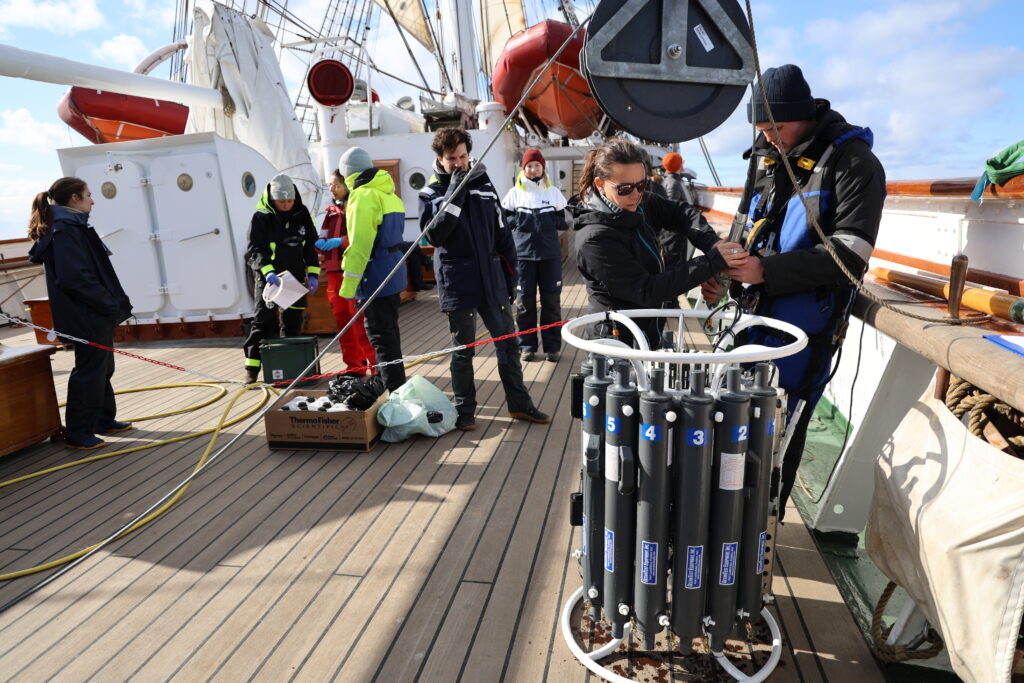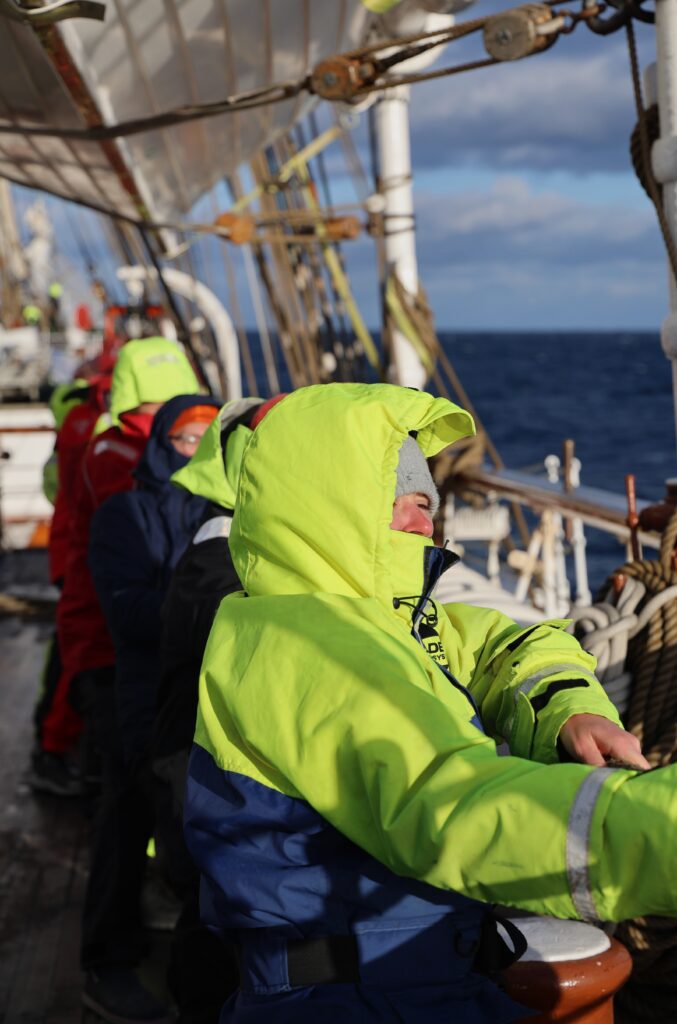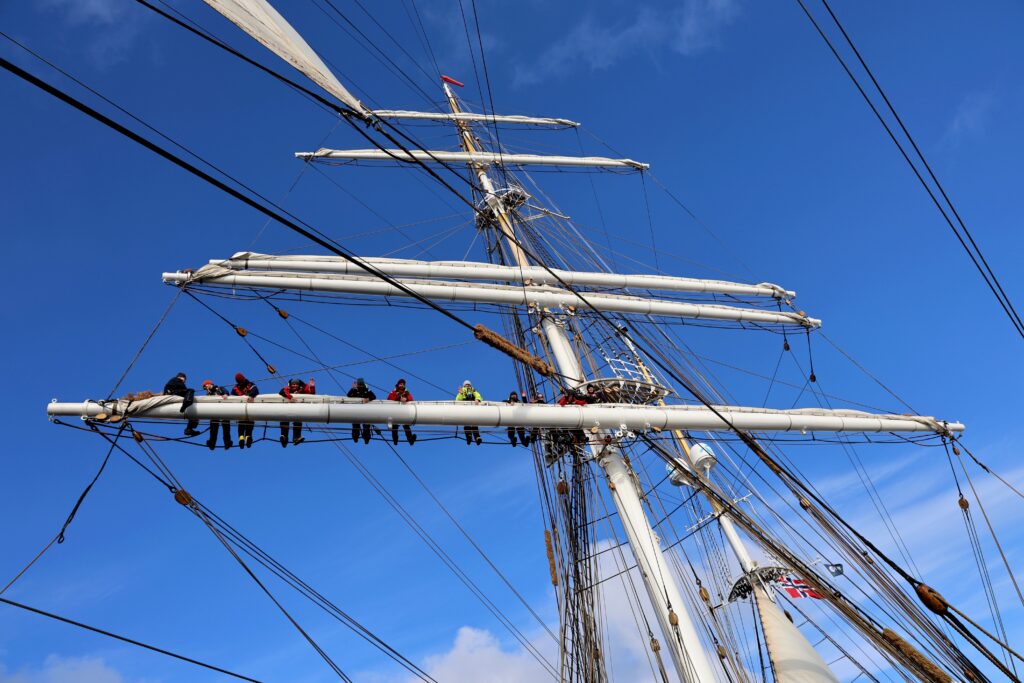Today, is the first day of scientific sampling for both the ESA Advanced Ocean Training Course, but also the One Ocean Expedition around the northern hemisphere.
The course involves an extraordinary six-week training voyage for next-generation ocean scientists aboard a majestic tall ship that set sail from Tromsø in Norway bound for Nice in southern France. But this is no ordinary journey.

Rough seas. (ESA/Ocean Media Lab)
These upcoming researchers will be taking a deep dive into ocean science, empowering them with skills to harness satellite data for research, innovation and sustainable development – and preparing them to become tomorrow’s leaders and ambassadors for ocean science.
It’s been a long haul to get here and we all approached the morning with some trepidation regarding the weather and how everything was going to work out. We are all learning how the Statsraad Lehmkul, after full refit, can deliver the science we need for the ocean we want.
Using the Ocean Virtual Laboratory (OVL) we have been monitoring the ocean from space over the last few days so that we can optimise our ocean sampling strategy together with satellite overpasses from Copernicus Sentinel-1 C-band radar imagery and Sentinel-3 visible/infrared imagery and altimetry.
The OVL allows us to seamlessly visualise ocean model and numerical weather prediction model outputs, in situ observations and satellite data together. It’s a fantastic system that we use both at sea and back home and allows us to visualise our voyage track in near-real time and make an amazingly informed judgement on where to place our sampling stations – it gives us the big picture.

Learning to take samples. (ESA/Ocean Media Lab)
We have a Conductivity-Temperature and Depth (CTD) system aboard incorporating sensors measuring oxygen, fluorescence, photosynthetically active radiation (PAR), and 10 Niskin bottles allowing us to sample water at different depths down to 1200m.

Walking the plank for science. (ESA/Ocean Media Lab)
This is a workhorse instrument for ocean science, providing unique information for our ocean physics group and our ocean biology team. It is complemented by trawl nets that are used to collect near-surface samples either by towing alongside the ship (Manta trawl) or dedicated vertical casts.

Learning the ropes. (ESA/Ocean Media Lab)
Learning by doing is the best way to understand what you need to get a job done – and this is a fundamental component of our training course.
We were confronted by challenges – snow, sleet, wind, waves, cold, misplaced equipment, challenging water sampling budgets, forgotten items sitting back home. Out here in the Norwegian Sea there are no shops and we must be innovative and resourceful to find workable solutions while at sea.

Climbing to new heights. (Ocean Media Lab)
Working with the Statsraad Lehmkuhl team to keep everything on track is a great experience because the crew are just as passionate about the ocean as we all are. This is all part of an ocean scientist’s training and fundamental to success.

Not for the faint hearted. (ESA/Ocean Media Lab)
Today is the day it all came together: the preparations of all our students, the lecture team, the Statsraad Lehmkuhl crew and the weather! We are at sea, making unique measurements of our One Ocean and we are all full of excitement and wonder at the treasure trove of scientific information we have accumulated.
Well done to everyone for a successful start to our voyage!
Post from Craig Donlon (ESA)
See also ESA news: Next-generation scientists set sail to harness space for oceans








Discussion: one comment
Courageous (!) and I would certainly count myself to the faint hearted 😉
Safe travels and smooth sailing!